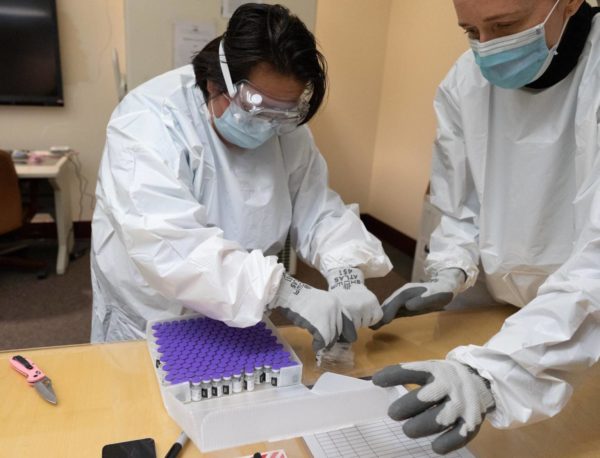
Across Alaska, chambers of commerce and other organizations are offering incentives like cash, gift cards and raffle tickets for people to get vaccinated against COVID-19.
And Alaska State Chamber of Commerce President Kate Capozzi said the $1 million incentive program she oversees seems to be working.
“Some communities have actually asked for more funding, because it’s been so wildly popular that they see more opportunity to continue these incentive programs and get more people to show up to get their vaccinations,” she said.
Typically, the incentive is money. Though Maniilaq, the tribal health organization of the Northwest Arctic, offered a drawing for a drum of stove oil earlier this year.
In July, the Anchorage Chamber began supplying city-run clinics with $50 gift cards for newly-vaccinated Alaskans to redeem at local businesses. Bethel offered $100 cards to the grocery stores.
And the state is considering launching its own incentive program. But the most common rewards — cash, prizes, or a chance to win a big pile of money in a drawing — won’t work on all skeptics, experts say. And with the vaccine widely available, remaining resistance has hardened as the weeks have gone by.
RELATED: Leaders of Alaska’s largest hospitals issue stark warning as COVID-19 surge continues
University of Alaska Anchorage economist Kevin Berry examined a small survey of Alaskans who are unvaccinated.
“The most common reason why people are hesitant No. 1 is ‘I don’t think I need it,’” Berry said. “No. 2 is ‘side effects.’ And the third one is ‘I don’t trust the vaccines.’”
Barry said incentives work to get people who were close to the threshold anyway. For them, cash or even free beer has a way of lowering barriers.
But Barry said incentives aren’t as helpful to reach people who don’t trust science or authority figures.
“The folks that I know who don’t trust the government would trust them even less if they’re being plied with free beer,” he said. “Because then the question would be, ‘If it’s so good, why are you bribing me?’”
You’ll find exactly that response if you look at the Facebook posts where local chambers of commerce announce their vaccine incentives.
[Sign up for Alaska Public Media’s daily newsletter to get our top stories delivered to your inbox.]
In theory, Berry said, almost everyone has a price.
“I could imagine a double PFD or thousands of dollars would convince a lot of people who are very resistant to a vaccine to get one,” he said. “But then there’s equity concerns. There’s questions about how much should we really be paying people? What’s the actual marginal value of vaccination, if we’re paying the very last person in Alaska to get vaccinated and everybody else already has?”
Instead of incentives, Berry believes holdouts might be convinced by outreach from people they trust. But he said that’s a tricky balancing act.
“If they push too hard, then they won’t be trusted, right?” he said. “Like people will start to think they’re in on it, whatever ‘it’ might be. Whereas if they don’t, they’re leaving people exposed to a really deadly infectious disease.”
RELATED: Alaska returns to high alert as COVID-19 cases and hospitalizations climb
Economist Jonathan King, an Anchorage consultant, said Outside research shows an ideological split when it comes to monetary vaccine incentives.
“It turns out that that actually tends to work better — at least the data suggests that that works better — on people who are on the leftward side of the political spectrum,” King said. “The right is more interested in, ‘Well, is this a path of freedom from the restrictions associated with the virus?’”
King said that leaves little to work with in Alaska, since conservative areas like the Mat-Su, Kenai Peninsula and southeast of Fairbanks don’t have many local restrictions to lift — and have the low vaccination rates to match.
Liz Ruskin is the Washington, D.C., correspondent at Alaska Public Media. Reach her at lruskin@alaskapublic.org. Read more about Liz here.





